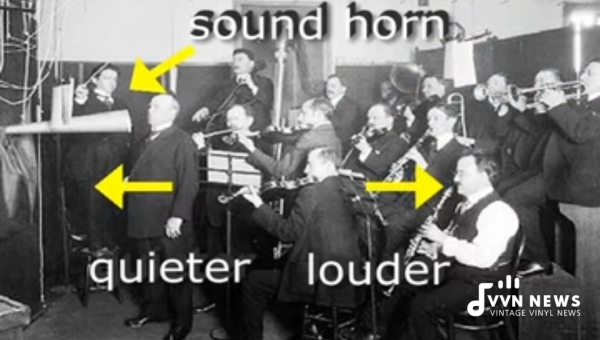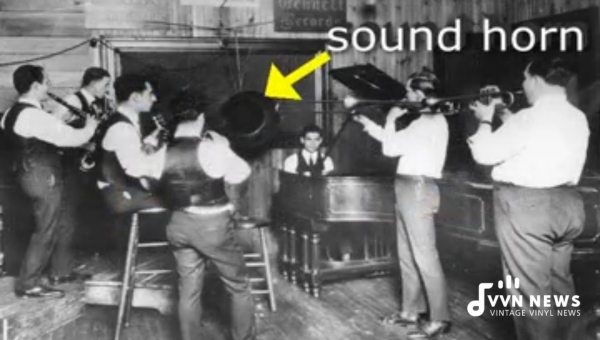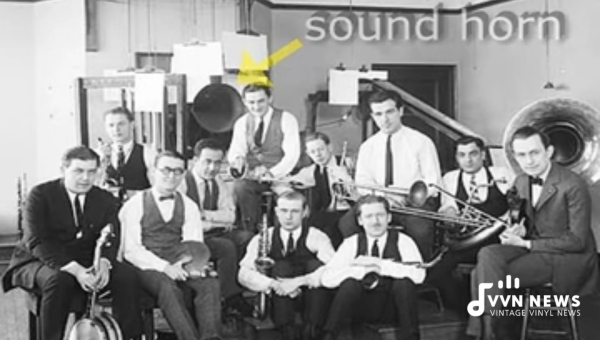There are countless techniques in the world of sound recording, each uniquely influencing the results we obtain.
One such essential and highly efficient technique is close miking in recording – a method that has left its mark in studios worldwide.
As I delve deeper into this topic, you’ll get to understand its key aspects and relevance.
Close miking is not merely a technique; it’s an art that enhances the dynamism and quality of the end product in unbelievable ways, provided you identify its utilization aptly.
Of course, while there are other miking methods, ‘close miking’ holds its place for a reason. Let’s find out why!
What is Close Miking?
Close miking is an audio recording technique where the microphone is placed close to the source of sound, typically within 12 inches. This method provides a direct, isolated sound and reduces the amount of ambient noise captured.
It’s commonly used in music studios to record instruments or vocals individually, allowing for greater control during mixing and post-production.
Close miking ensures a high signal-to-noise ratio, capturing more of the desired sound (the signal) and less unwanted background noise (the noise).
Abiding by certain rules while applying this technique can help achieve enhanced audio isolation and intended sound dominance.
One common practice is following the “3:1 rule”, where every additional microphone placed should be three times further apart from each other than they are from their assigned sound source.
Importance of Close Miking

Close miking plays a crucial role in various recording scenarios, but its importance is most evident in the following two domains:
Separating the Signal from Ambient Sounds
One of the primary reasons for using close miking is to isolate the direct sound of the instrument or source you’re recording.
This technique provides sound isolation, ensuring that the desired sound prevails while the ambiance or room noise dims.
By placing your microphone closer to your instrument, you’re collecting more direct sound and less reflected sound, which adds to recording clarity.
In other words, with proximity comes purity; as you move closer to an audio source, environmental or ambient sounds decrease, making close miking paramount for a clean and crisp recording.
Distinguishing the Signal from Other Instruments
Another prominent use of close miking is attaining separation between different instruments in orchestral or band setups.
Using this method allows different microphones to focus on distinct instruments without cross-interference or audio spill from other nearby sources.
Isolating individual elements permits post-production flexibility – it becomes easier to adjust levels, apply effects, and pan positions without impact on additional tracks.
Knowing that each instrument’s sound has been distinctly captured gives you control over every nuance during editing and mixing.
By mastering this technique, we get clean audio signals that bring sonic details into sharper focus while minimizing unwanted noise from both ambient sources and other instruments.
Close miking empowers us with precision control over our audio signal – crafting an authentic sonic experience that resonates with clarity and depth.
Also Read: Instrument Miking Techniques To Capture The Best Sound 2025
Close Miking Equipment
Running a successful close miking operation requires industry-standard equipment that meets the task’s stringent requirements. A foundational aspect of that setup, unsurprisingly, is the right sort of microphone.
Different Microphone Types for Close Miking
When it comes to close miking, not all microphones are created equal. Depending on the sound source you’re dealing with, certain types might be preferable over others.
So, it is crucial to understand the various available options and determine which fits your specific scenario best.
- Dynamic Microphones: These microphones are robust and versatile, capable of withstanding high sound levels without distortion. Dynamic mics are often used for drums and amplified instruments, which provide a reliable way to capture loud sounds up close.
- Condenser Microphones: Condenser mics offer an excellent frequency response and output level, making them suitable for detailed recording tasks like capturing vocals or acoustic instruments. However, these sensitive gadgets may not cope well with exceedingly loud sound sources.
- Ribbon Microphones: Traditionally delicate but offering unparalleled natural sound capture, ribbon mics have found their resurgence with sturdy modern variants suitable for applications like guitar amps or string instrument recording. Still not as robust as dynamic microphones but a great choice if treated gently.
Advice on Picking Suitable Recording Equipment
Selecting the correct recording equipment can be daunting if you’re new to the world of audio technology. Here are some tips on finding what you require:
- Assess Your Needs: Begin by identifying what sounds you’re trying to record—an instrument, a voiceover, an ensemble. Ensure that your selection aligns correctly with your requirements; each microphone excels in specific situations.
- Consider Your Environment: Ambient noises can deeply affect recordings; hence choose equipment that helps minimize these disturbances—this is where close miking could essentially be your answer.
- Budget Constraints: Buying professional-grade equipment can weigh heavily on pockets but remember: it’s better to invest once in quality gear than repeatedly replacing substandard material.
- Simplicity & Ease of Use: Equipment that features clear descriptions and straightforward settings would offer easier handling when maneuvering through different audio situations.
- Understand Mic Specifications: Familiarize yourself with terminologies such as polar patterns (omni, cardioid), frequency response range, or SPL handling capability before making any selection.
- Quit relying solely on brand reputation: Reviews from people who’ve already had hands-on experience using it could provide more realistic insights into a product’s performance.
Close miking manifests itself magnificently only when graced by good-quality compatible equipment; so investing time in choosing wisely benefits heavily in crafting exceptional audio masterpieces.
How to Execute Close Miking

Perfecting the art of close miking requires not just the right equipment, but also a keen understanding of the recording environment and a responsive ear.
Listening & Using Your Ears
In any form of sound recording, your ears are an integral tool. It all boils down to how well you listen.
You may have top-notch gear, but without mindful listening and subjective judgment, achieving a fine-tuned sound is practically impossible.
So, amplify your listening skills – they will guide you to perfect microphone placement that best compliments your sound source.
When placing the microphone, let your ears be your compass. Position yourself at different angles around the instrument. Listen closely to identify where the sound is most appealing and clear; that’s where you should place your mic!
Reflective Surfaces
Reflective surfaces can be tricky as they tend to bounce off sounds producing undesirable echoes or unwanted frequencies.
It’s crucial to be aware of such surfaces in one’s recording room as these can drastically affect close miking results.
The aim during close miking is to capture direct sounds and minimize ambient or reflected sounds. Positioning microphones away from walls or solid surfaces minimizes reflections and maintains audio clarity.
Decibels and Sound Pressure
Understanding decibels (dB) and sound pressure levels (SPL) is fundamental during close miking execution. Higher decibels indicate louder sounds, which might cause potential distortion if too intense for the microphone to handle.
Certain microphones thrive under high pressure levels, making them suitable options for close miking loud instruments like drums or brass without distorting excessively.
For instance, dynamic microphones can handle high SPLs comfortably as they are robust and less sensitive to loud sources. Ribbon mics require more caution due to their delicate nature.
Identifying the microphone’s maximum SPL is important as it gives us a sense of how close we can place the microphone without causing distortion or damage.
These values facilitate better decision-making regarding microphone selection for different instruments and scenarios.
Close miking is a technique that requires a good ear, an understanding of one’s environment, and appropriate placement to capture the best sounds with minimal interference.
Also Read: Mixing Bass And Kick For Low-end Balance [Expert Guide]
Challenges Faced in Close Miking
Despite the many advantages of close miking, there are a few challenges that may arise during its application – one of them being proximity influence, followed by the comb filtering phenomenon and complications related to the 3:1 rule.
Proximity Influence
Proximity Effect directly pertains to frequency response when a directional microphone is used close to the sound source.
In simpler terms, the closer the microphone, the more significant the bass response. It can result in an unnaturally deep or “boomy” sound which possibly may not be desired.
This condition is generally not observed in omnidirectional microphones or ribbon microphones with a non-directional polar pattern.
Thus, comprehending your equipment and its behavior against distance variation is paramount for better audio outcomes.
Comb Filtering Phenomenon
This phenomenon occurs when two identical signals meet after traversing different paths; wherein phase alignment issues generate what looks like the teeth of a comb on a frequency graph – hence its name.
It can create an array of audio inconsistencies affecting the tonality and coloration of your captured sounds.
You hear these discrepancies as phase cancellations leading to diminished frequencies, or perhaps an unwanted boost at certain frequencies.
Avoiding such anomalies requires meticulous attention to mic placement. Some solutions include using less number of mics or switching to omnidirectional ones that are less prone to this issue.
The 3:1 Rule
The ‘3:1 rule,’ while immensely useful for avoiding interference between multiple mics, brings a set of complexities too that can’t be disregarded.
The rule implies that for each unit distance between the mic and the source; three times that distance should be maintained between two mics.
It’s not always practical or feasible due to physical restraints within studios, live performance setups or simply wanting a different aesthetic feel from your recording session than what this rule facilitates.
Blending creativity and this technical guidance can sometimes become quite daunting but nonetheless learning from trial-and-error forms an integral part of any successful recording process.
Also Read: Guitar Amp Mic Mixing [Guide To Creating The Perfect Sound]
FAQs About Close Miking
What is close miking in recording?
Close miking is a technique used in sound recording where microphones are placed close to the sound source, usually between 3-12 inches, to capture clearer and more isolated sound.
Why is it necessary to apply the ‘3:1 rule’ in close miking?
The ‘3:1 rule’ assists in reducing audio interference among multiple microphones. It suggests that additional microphones should be placed roughly three times further apart from each other than they are from their respective sound sources.
How can I ensure better results when close miking?
Ensure you have a good understanding of your microphone’s specifications and features. For instance, select appropriate microphone patterns that would aid in achieving optimal results. Make individual adjustments by listening and monitoring the sounds with precision.
Which types of microphones are best suited for close miking?
Microphone selection depends on the specific requirements of the session, though dynamic microphones are often preferred due to their durability and capability to handle high sound pressure levels (SPLs). Condenser microphones also work well as they possess a broader frequency response.
What challenges might I face while attempting a close-miking setup?
Some challenges could be the proximity effect resulting in distorted low frequencies of woofer sounds when very close-miked, comb filtering (interference caused by multiple sources), overloads due to high input volume levels, and isolation difficulties when multiple instruments or voices are involved.
Conclusion
Close miking is a practical and effective recording technique that can greatly improve the quality of your recordings.
With different kinds of equipment available, you can utilize this method across various scenarios.
The key lies in understanding the principles that govern its use—fine-tuning your decisions based on these will yield superior results.
Pay attention to direct and reflected sounds, avoid proximity effect pitfalls, and adhere to the 3:1 rule to achieve an unparalleled sound experience.
Take your recording journey a notch up with this simple yet incredible technique, close miking.








